Some software issues can seriously affect user experience, especially because they ultimately affect regular functioning. One such issue many users notice is the PC turning off and on randomly at some second interval.
Sometimes, the problem is an easy fix, like a misplaced or wrongly inserted connection cable in the power supply. However, there are also situations where the computer turns off and on repeatedly because of internal software issues. Here, you will learn of both sides and the available fixes.
What Causes PC to Turn On and Off Repeatedly
Of course, before you can fix the problem, you should know the cause of it to avoid using the wrong solution for the main issue. In the context of what causes a computer to turn on and off randomly, the main reasons typically include loose connections between:
- GPU and monitor.
- PC and power source.
- Power source and monitor.
Other causes are also possible, like the ones listed hereafter:
- Damage in the electric components.
- Faulty BIOS.
- PSU-based issues.
- Failure of the system or cooling fan condition.
- RAM-based problems.
- Display unit or monitor-based defect.
- Malware or viruses in the boot sector.
🏷️You may be interested: Laptop Turns On Then Off Immediately
How to Fix Computer Turning Off and On Repeatedly
If your computer turns off and on repeatedly, the following are some of the most useful steps you can take to combat the issue.
- Fix 1. Check Power Supply and Cable
- Fix 2. Check Computer Temperature
- Fix 3. Check Memory
- Fix 4. Check Motherboard
- Fix 5. Disable Automatic Restart
- Fix 6. Update BIOS
- Fix 7. Perform Startup Repair
- Fix 8. Reset this PC
Fix 1. Check Power Supply and Cable
One of the first things you should do is check the power source and the condition of your power supply. This is because, most of the time, the faulty condition of the power supply unit causes bad connectivity with the PC, resulting in further functional issues. The same goes for defective connector cables.
The best course of action here is to replace the power supply if it does not meet any power-checking tests. Make sure to keep the PC plugged in for around 5-6 minutes after you replace the PSU and then turn it on. This allows the CMOS battery to charge up.
Fix 2. Check Computer Temperature
You can check if your CPU is working properly or not by looking at the current temperature it reads. Typically, the CPU temperature should be between 30°C- 55°C or at least 65°C for high-performance users. You can check the condition of your CPU temperature using reliable third-party software like Core Tempe or access the BIOS ecosystem.
Step 1: Turn the PC on from the main power button.
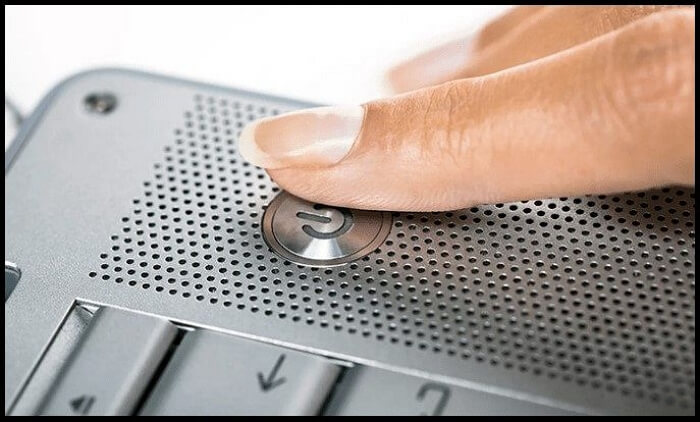
Step 2: Tap on the dedicated key for BIO on your device. Check the manufacturer's information in the manuals to confirm. Here, let's use F12 as an example.

Step 3: Browse to the Performance Monitor or CPU section and check the information available.

Fix 3. Check Memory
Sometimes, the PC turns off and on repeatedly due to memory-based issues in the device. DRAMs typically need constant power and processor-based support to hold up data.
Thus, during the RAM holding process, the computer can shut down when it occurs during the operating system or boot file-based initialization. In such a situation, the BIOS will restart your computer's booting process and block the choking RAM.
So, it would help if you cleaned the RAM slots and sticks properly, first running a full power cycle.
Step 1: Remove the cables for the power supply and press down plus hold for 15 seconds on the power button.
Step 2: Open the CPU casing, look for RAM slots, and snap the card slips on each side. Then, gently remove them with slow and steady support.
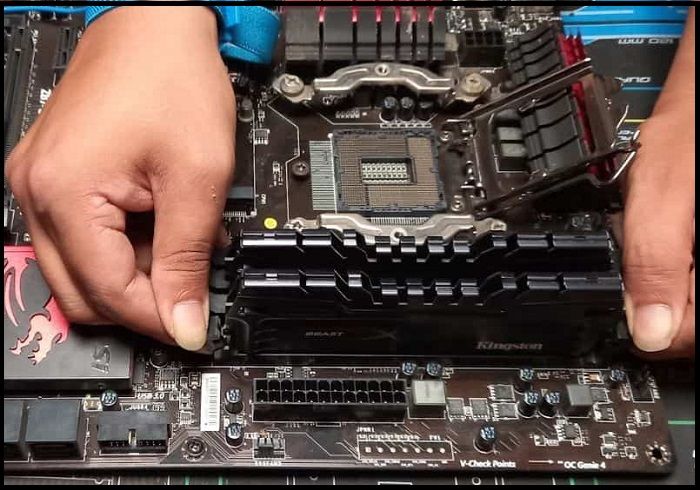
Step 3: Use a natural rubber to clean it and use compressed air to blow out all dry dust particles/wipe away the particles with a microfiber cloth.
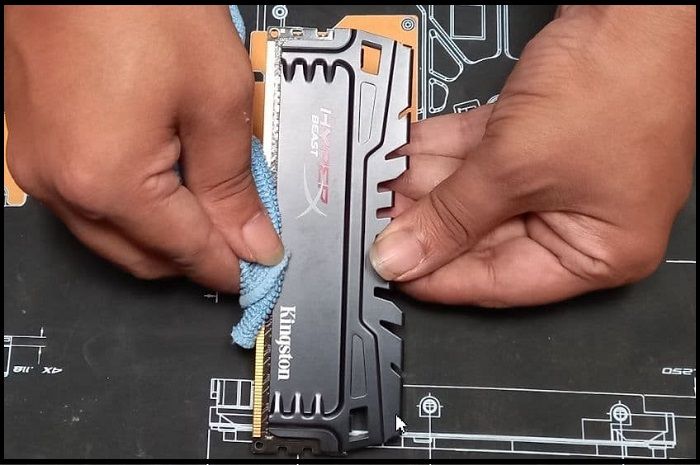
Step 4: With Q-tips, clean out the RAM's gold-plated parts.
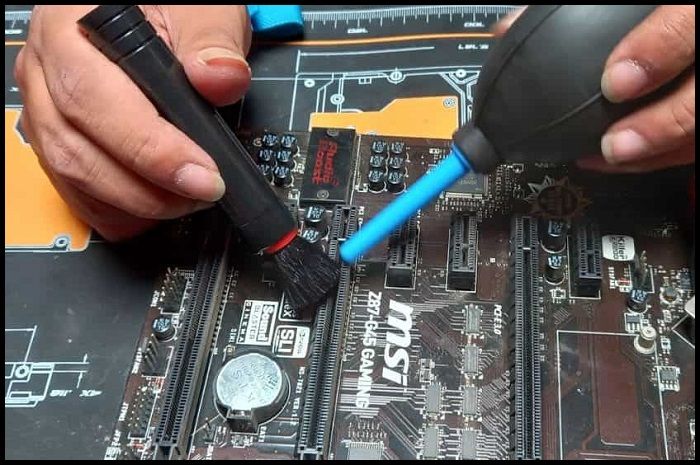
Step 5: Clear out the slots with compressed air again and replace all RAM sticks and other components.
Fix 4. Check Motherboard
In some cases, a failing motherboard condition is a leading reason behind the problem of sudden PC switching off and on. You should reseat all elements inside the PC and check the condition, reattaching connections with renewed focus. The types of components to research may include power supply cables, internal data, and memory modules.
It would help if you unplugged and reconfigured the mouse and keyboard sections. Of course, this is a complex fixing problem for regular users, so it is better to take the help of more experienced technicians for this process.
Fix 5. Disable Automatic Restart
Sometimes, the computer turns off and on repeatedly due to internal configurations blocking other functions, like the preset Automatic Restart functionality. You should disable it to see if the issue resolves automatically.
Step 1: Access the Start menu.
Step 2: Add the term "sysdm.cpl" in the text box and hit Enter.

Step 3: Under the System Properties section, choose Advanced.
Step 4: Choose Startup and Recovery next and tap on Settings.
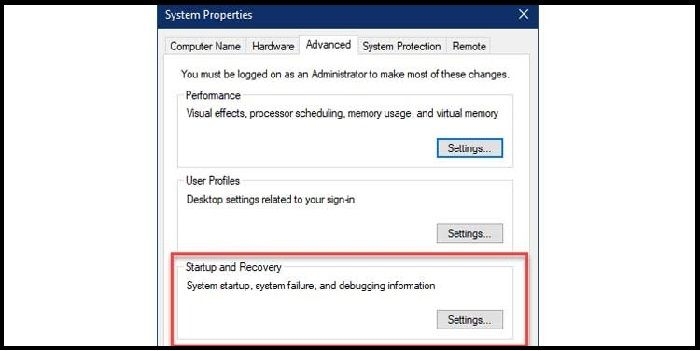
Step 5: Disable the Automatically Restarts checkmark in the System Failure portion and press OK to confirm.
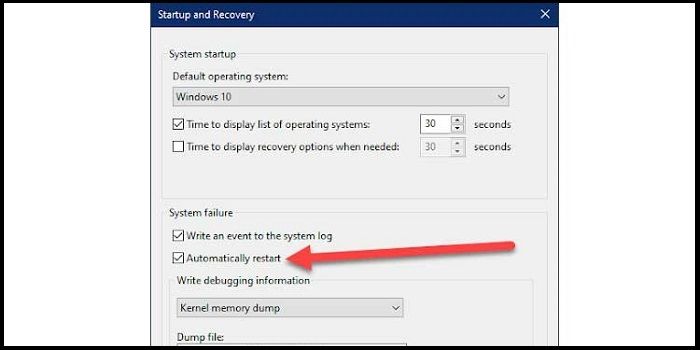
Fix 6. Update BIOS
BIOS is mainly the firmware in a computer system that supports the bootup process. It instigates the components within the computer to kickstart the startup sequence, so issues in the BIOS ecosystem can cause startup-related problems.
Here, you should reset the available BIOS chip to fix the problem. In some cases, that may not work if the BIOS shutdown settings were not functioning beforehand due to damage. In that case, you need to replace the chip. You can choose to update your BIOS with a USB or not.
Step 1: Tap on your device's designated key for the BIOS function (check the manufacturer's guide). It typically varies between Del, F12, F10, F8, or F2 keys.

Step 2: Access Factory Default using the arrow keys in the shutdown window.
Step 3: Choose the Restore/Reset Settings option and confirm the next prompt.
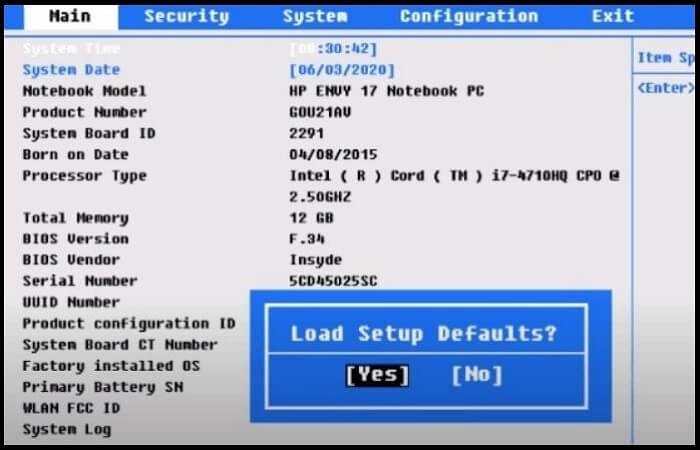
Step 4: Save your changes and exit this menu.
Fix 7. Perform Startup Repair
You can utilize the WindowsRE startup repair function as it can troubleshoot certain issues with the system bootup errors.
Step 1: Switch the device on.
Step 2: After the manufacturer log comes up, press the power source button to shut it off.
Step 3: Repeat Steps 1 and 2 in a cycle twice.
Step 4: When the third round starts, the WindowsRE or Windows Recovery Environment will open up.
Step 5: Choose Troubleshoot > Advanced Options.
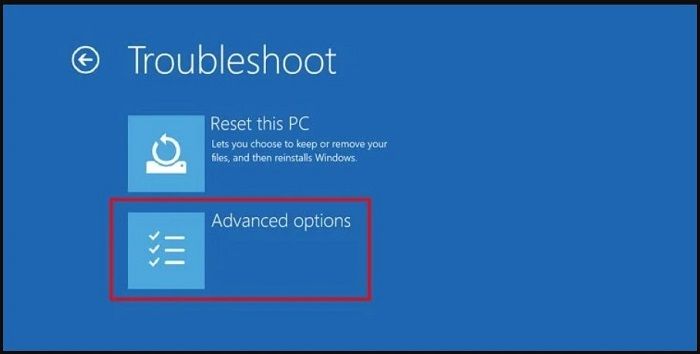
Step 6: Next, select the Startup Repair option.
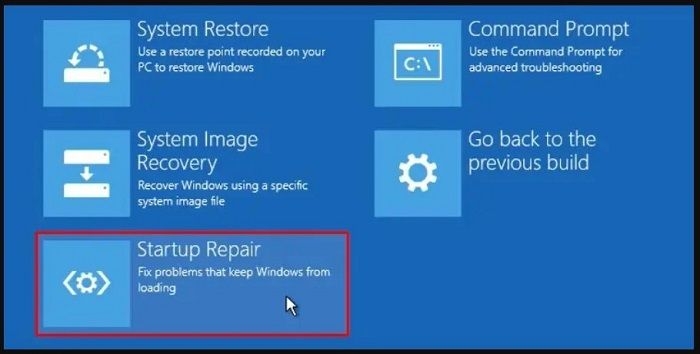
Step 7: Choose your account and add the password. Then, press Continue. Wait until this finishes up.
Fix 8. Reset this PC
You can directly reset the system if the startup repair function does not work. It is useful as the latest upgrade version may not have the "computer turns on and off repeatedly" problem.
Step 1: Open the Windows RE and access Troubleshoot.
Step 2: Select the Reset this PC option.
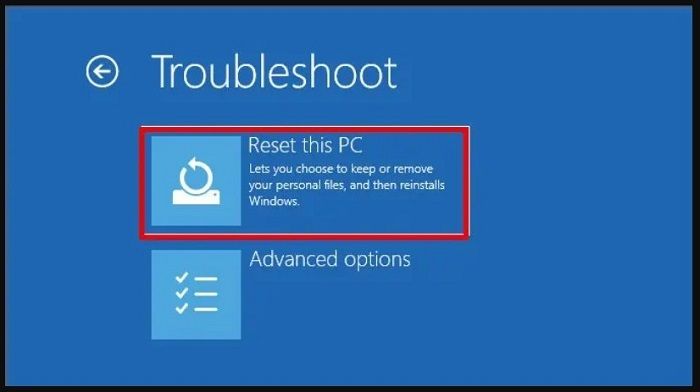
Step 3: Tap the "Remove Everything" option on the next page.
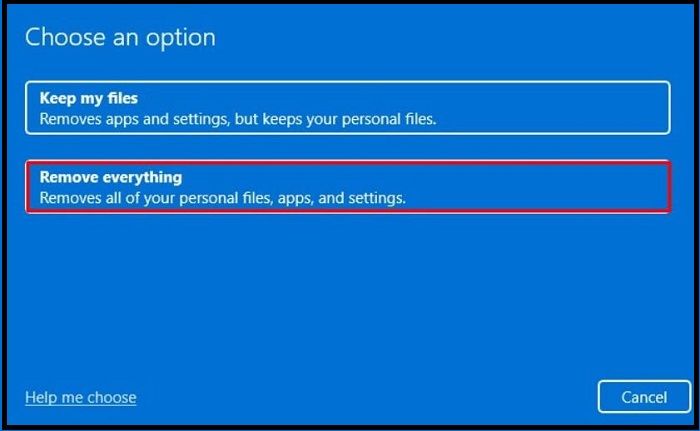
Step 4: Then tap Next.
Step 5: Select the "Fully clean the drive" option > Reset. Wait for some time for this to kickstart.
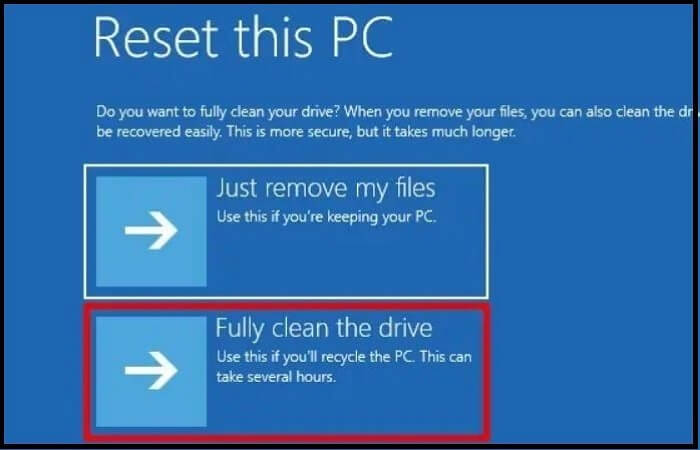
Pro Tip: How to Backup your Computer and Protect Data
Of course, there is the possible risk of data loss in some cases, like when you reset the device and upgrade your operating system. Using high-quality backup software like EaseUS Todo Backup to store the available system files and data safety is much safer.
Secure Download
With EaseUS Todo Backup Home, it is much simpler to safeguard all your information data from files, disks/partitions, and systems. Then, put them into external hard drives, local drives, cloud, network, or a NAS connection for a high-quality data-saving experience. It can help you to install Windows 10 on a hard drive for another computer and clone a hard drive.
In addition, you can also use it to create an image of an SD card. You can use the advanced backup benefits in the free version, like the ability to activate scheduled backups and other features.
Features:
- Strong cloud support for saving all system backups.
- Different backup versions, like full, incremental and differential backups.
- Works for file, system, partition, and disk backup.
- Fast backup and restore process with simple taps.
- Install Windows 10 from one Pc to another.
The steps below are how to back up your computer.
Step 1. On the main page, click "Select backup contents".

Step 2. Among the four available categories, click OS.

Step 3. EaseUS Todo Backup will automatically select your system partition, you only need to select the backup destination.

Step 4. Both Local Drive and NAS are available for you to save the backup file.

Step 5. After finishing the backup process, you can check the backup status, recover, open, or delete the backup by right-clicking the backup task on the left.
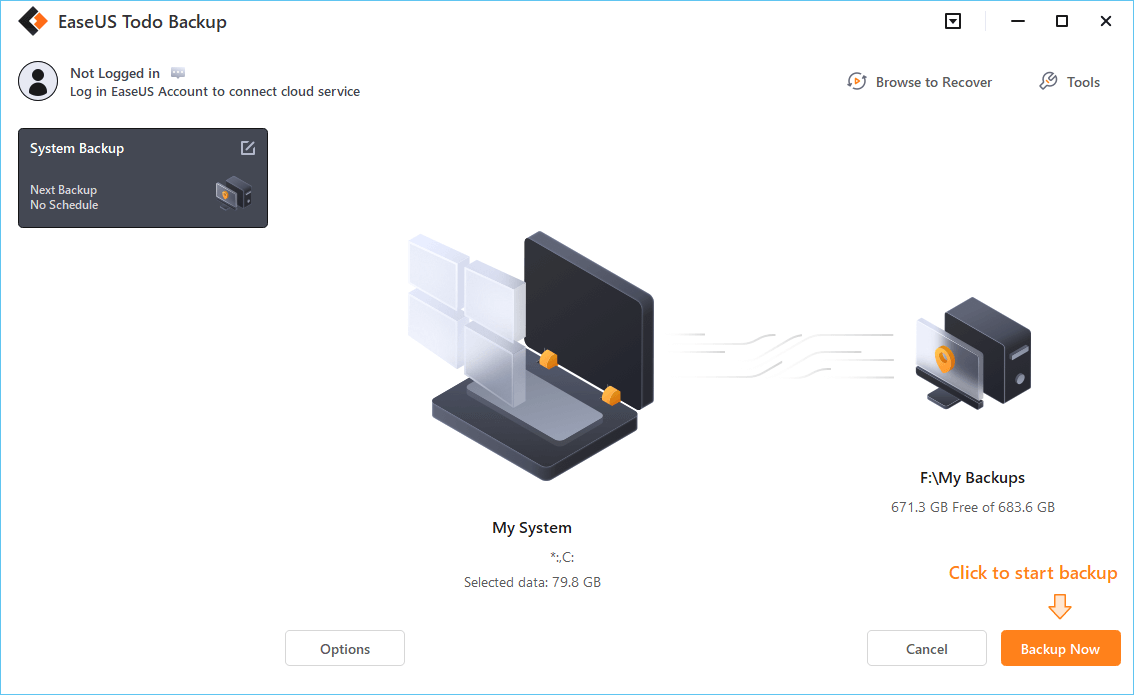
The Bottom Line
This article discusses how to solve the computer turns off and on repeatedly issue. It would be best if you took the time to understand your system's main problem and take the necessary steps to fix them, like fixing the motherboard or RAM, deactivating Automatic Restart, and other software upgrades.
You should learn the steps for each solution and carefully proceed with them to avoid additional issues, like extreme data loss. Use a user-friendly and powerful backup software like EaseUS Todo Backup in such a case.
Secure Download
FAQs
1. How do I know if my motherboard is faulty?
The following are the signs of a failing motherboard that you should take serious note of:
- Abnormal heat up of the PC system.
- You see the "Blue Screen of Death" view.
- The CPU reboots randomly.
- The PC is not booting as normal.
- Success system glitches, freeze-ups, etc.
- Slow overall performance.
- The system does not recognize specific hardware.
- The components do not have enough data speed or power.
2. How do I know if my power supply is failing?
The common signs that the power supply in a computer is not working anymore include the following factors-
- Extra noise from the case of the computer.
- Random system crashes.
- The PC components fail in operation continuously.
- Random blue screen-based crashes.
- The case fans continue to spin even though the PC is switched off.
Was This Page Helpful?
Updated by Larissa
Larissa has rich experience in writing technical articles and is now a professional editor at EaseUS. She is good at writing articles about data recovery, disk cloning, disk partitioning, data backup, and other related knowledge. Her detailed and ultimate guides help users find effective solutions to their problems. She is fond of traveling, reading, and riding in her spare time.
Written by Jerry
"I hope my articles can help solve your technical problems. If you are interested in other articles, you can check the articles at the bottom of this page, and you can also check my Facebook to get additional help."
Related Articles
-
PS5 No Sound? 8 Fixes Here! [Reasons Explained]
![author icon]() Sherly/2025-07-07
Sherly/2025-07-07 -
Time Machine Not Working on Mac: Possible Causes and Proven Solutions
![author icon]() Brithny/2025-07-04
Brithny/2025-07-04 -
How to Install Windows 10/11 on Chromebook Without USB
![author icon]() Jerry/2025-07-04
Jerry/2025-07-04 -
How to Solve Kindle not showing up on PC
![author icon]() Daisy/2025-07-04
Daisy/2025-07-04
EaseUS Data Recovery Services
EaseUS data recovery experts have uneaqualed expertise to repair disks/systems and salvage data from all devices like RAID, HDD, SSD, USB, etc.